Arc'teryx Mantis 30 Backpack Review
The Arc’teryx Mantis 30 Backpack has convenient pockets on its top hatch, but packing them full can cause the bag to tip when you open the main compartment.
Our Verdict
Save time. Get access to brief summaries of our reviews so you can browse and make decisions more efficiently.
Pros
- Comfortable harness system despite minimal-looking shoulder straps
- Efficient use of space with many pockets
- Lightly colored liner makes finding gear easy
Cons
- Soft structure makes it feel floppy
- Heavy top pockets cause bag to tip when opening main compartment
- Bottles can still slip out of side pockets despite bungee system
Technical Details
-
Capacity
30l
-
Weight (lb)
2.65 lb (1.2 kg)
-
Dimensions
21.7 in x 13.4 in x 9.4 in (55.1 x 34 x 23.9 cm)
-
Notable Materials
Recycled Polyester, DWR Coating, ITW Hardware, YKK Zippers
-
Manufacturing Country
Vietnam
-
Laptop Compartment Size
15"
-
Warranty Information
Buying Options
Full Review
A backpack with a top cover and a drawstring cinch instead of a regular zipper may seem counterintuitive, but it does have its perks. It’s a combination that keeps the gear inside the main compartment dry without resorting to stiff waterproof zippers like YKK’s AquaGuard models. It’ll be slower to open and close, but at least your clothing will stay dry after hiking through the rain or a malfunctioning waterpark. Thus, this style is common among backpacks designed for outdoor use, such as the Arc’teryx Mantis 30.
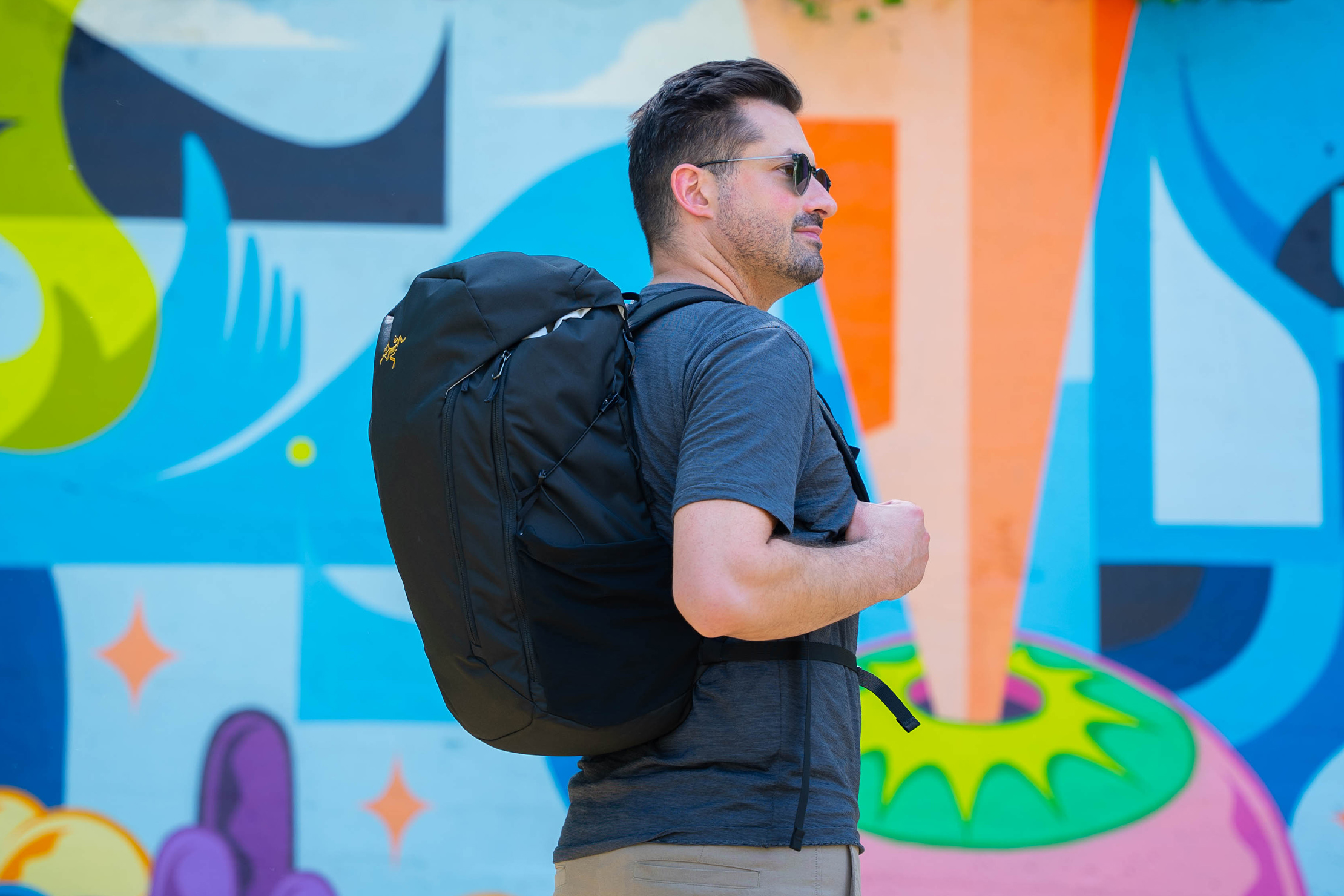
However, the Arc’teryx Mantis 30 has notable flaws beyond the slower-than-zippers main compartment access, namely, pockets that can cause it to tip over, a bungee system that doesn’t completely prevent bottles from slipping out, and an alternative way to access the main compartment that negates the weather-resistance of a cover and drawstring cinch design.
External Components
The outside material of the Mantis 30 is recycled polyester with a DWR coating for weather resistance. Durability-wise, we’ve got no complaints about the fabric. We’ve seen no loose threads nor permanent blemishes resulting from day-to-day use. Everything is still relatively pristine, and we’ve even grown a bit fond of the gold accents, courtesy of the branding, on this all-black colorway.
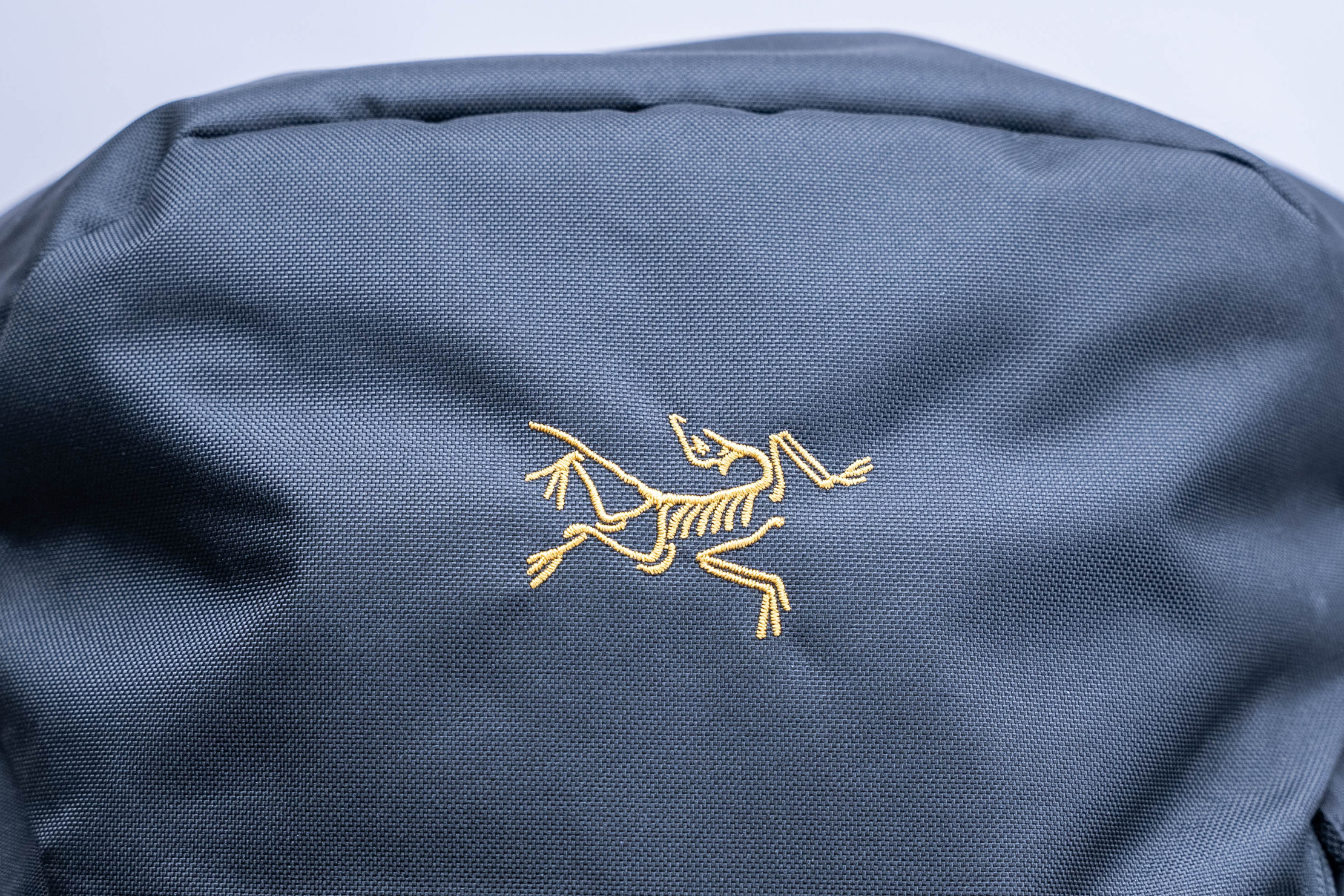
If we were to nitpick, the Mantis 30 looks saggy when it’s not fully packed. We won’t fuss over the aesthetics too much since it’s subjective. That said, sagginess definitely factors into comfort, which we’ll talk about more in the next section. For now, let’s talk about features.
On the side of the Mantis 30 are its water bottle pockets. These are quite large, even by 30-liter backpack standards, and they have a unique design that uses bungee cords to hold bottles in place. Instead of a simple elastic built into the pockets’ rims, each has a built-in bungee that exits and anchors on two points above the pockets. You can cinch the bungee to tighten it or undo one end and loop it into your bottle’s handle for more security. In theory, it’s a good design, if a bit over-engineered.
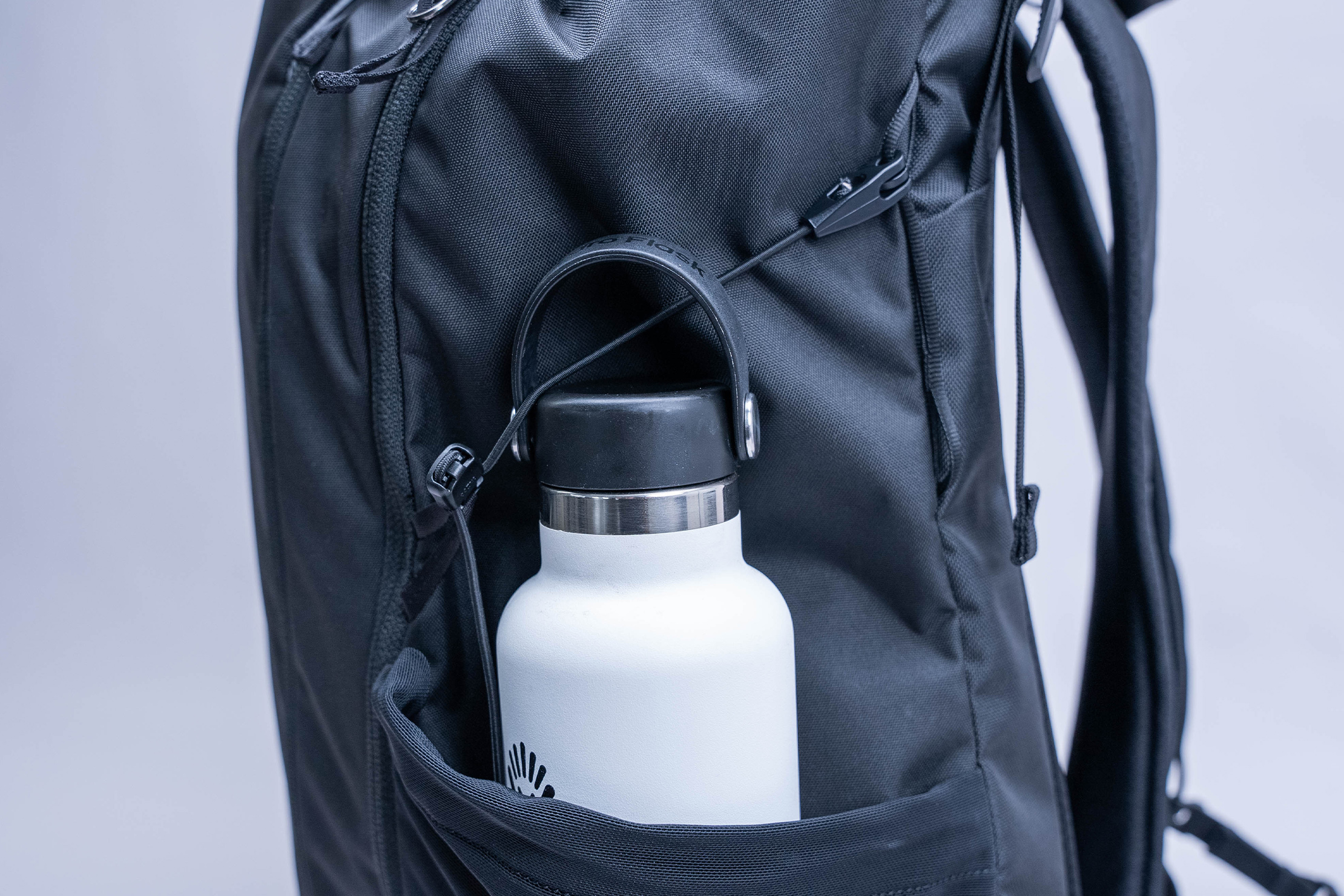
However, in practice, the bungee system is not enough to keep slim bottles in place. Slender bottles can still slip out of the large pockets if the bungees’ cinches go loose. We’d rather Arc’teryx use nylon side straps like the ones on Osprey’s Flare 28—it’s a much simpler solution and one that other brands also use. Alternatively, you can simply use a wider bottle like a 32-ounce Nalgene, which will firmly squeeze into the large pockets.
The Mantis 30’s shoulder straps look worryingly thin at first glance. They’re quite narrow and not particularly thick, given the bag’s 30-liter capacity. This led us to believe that the bag’s weight would force these straps to dig harshly, making it uncomfortable to carry for long periods. The good news is this is far from the case, as Arc’teryx did a good job designing the harness system for comfort. We’ll discuss the details in the Fit Notes section, but let’s check out some more details first.
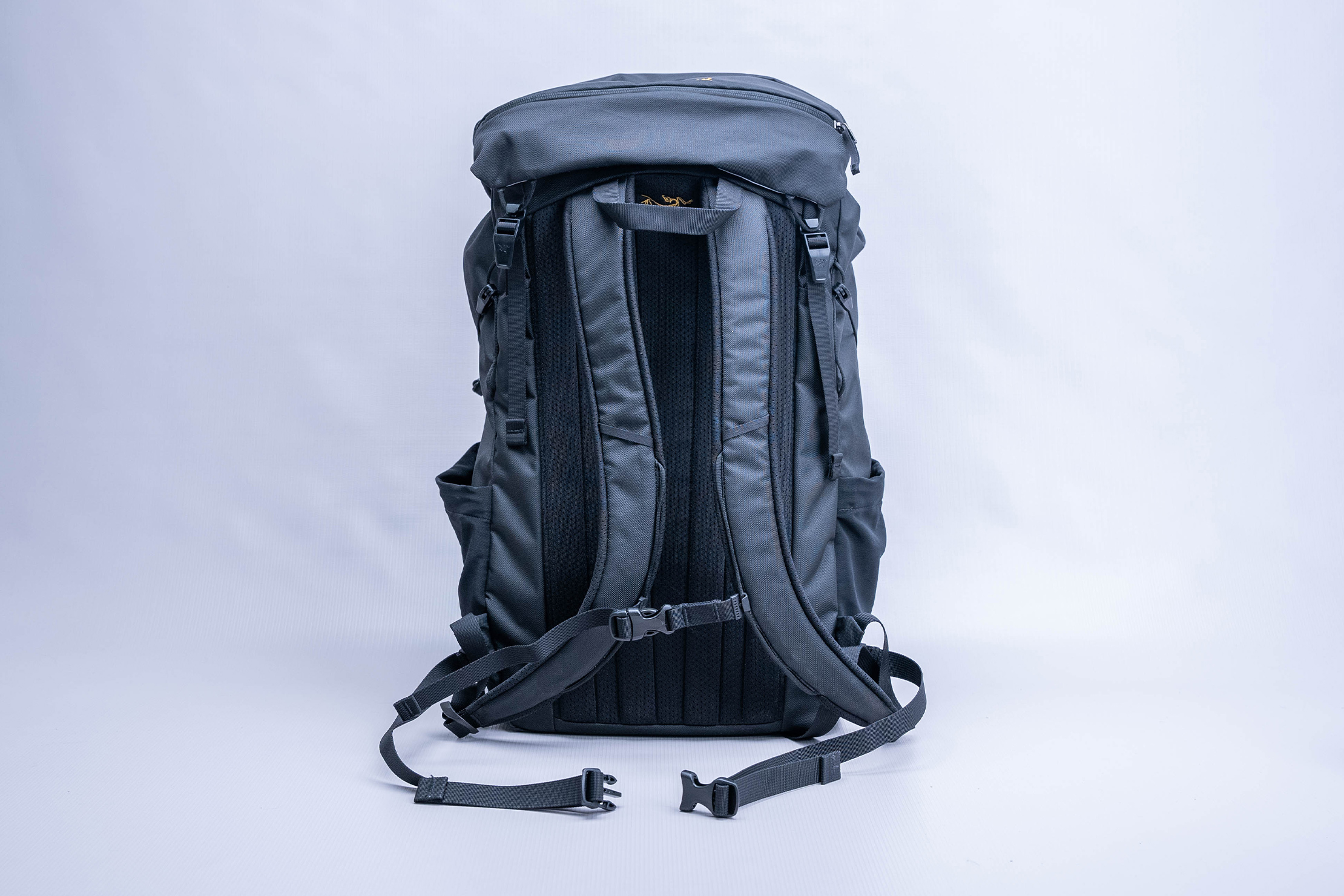
Between the shoulder straps is a simple nylon handle, the same kind you’d find on most backpacks of this size. While you probably won’t use this for long-term carrying, a simple handle is handy for hanging the bag on hooks. Think of the ones behind restroom stall doors or beside coworking tables. It’s also handy for moving the bag across short distances, like between hotel rooms, or pulling it from a tightly packed overhead bin.
The shoulder straps don’t have any fancy garnishings, just some basic features. On each side is a simple loop where you can attach accessories of your choice. We typically hang a small bottle of hand sanitizer or a key organizer. Below is the included sternum strap mounted on a daisy chain of loops. We still prefer sternum straps to be mounted on a rail so they can slide and adjust more granularly, but this does the trick just fine, too.
There’s also a waist strap along the bottom that’s relatively thin. Don’t expect it to support weight; it’s more for ensuring that the Mantis 30 sticks close and uniform relative to your back when you’re doing lots of movement.
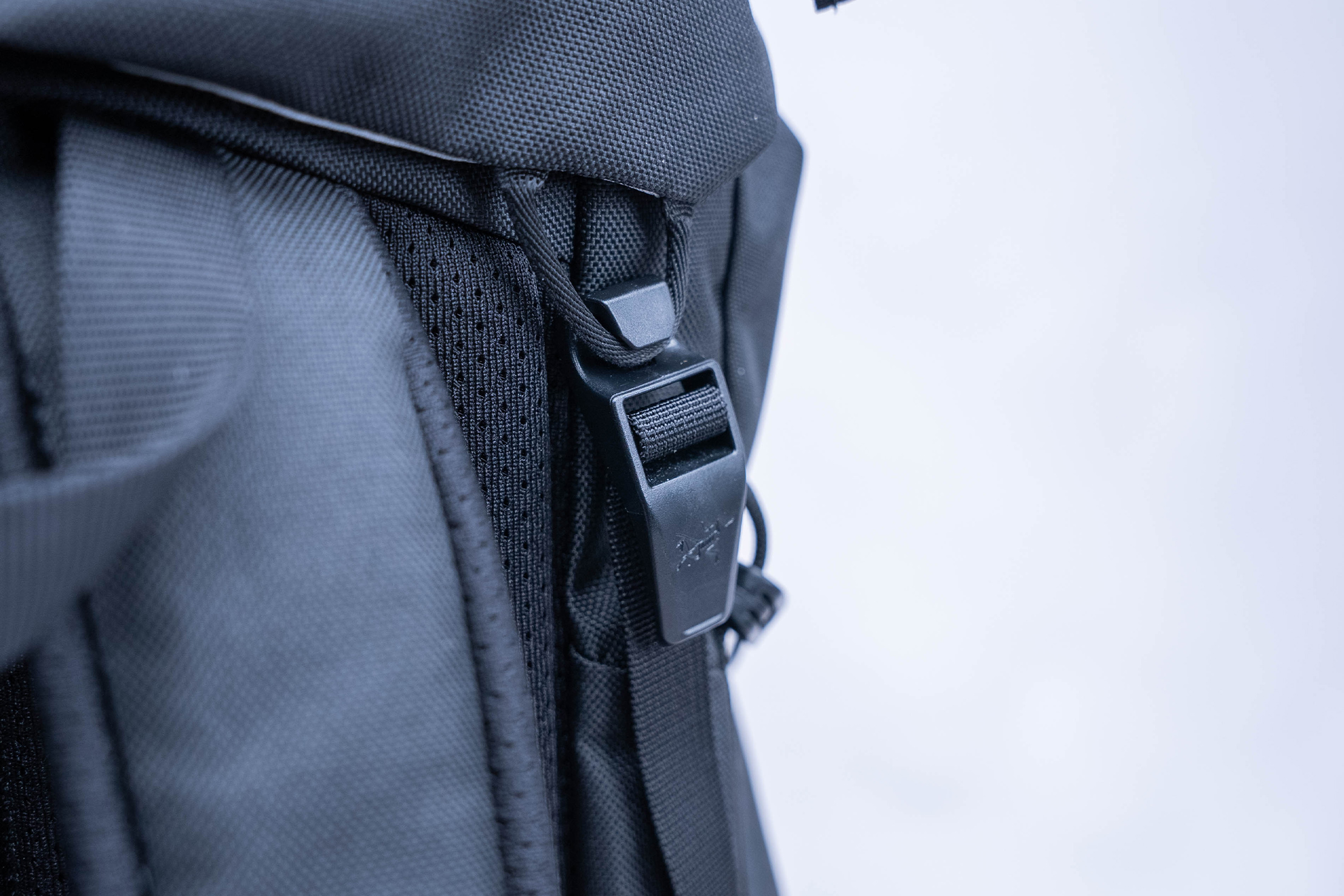
The padding here doesn’t feel particularly dense. Still, it’s soft enough to cushion a fully-loaded main compartment’s weight, and that’s considering how narrow the shoulder straps are. Plus, it’s all covered in mesh to expel warm air relatively freely once you start sweating. The rigid frame sheet sitting behind the padded back panel also helps a lot to keep the fit comfortable, especially since the rest of the bag is, unfortunately, floppy.
Fit Notes
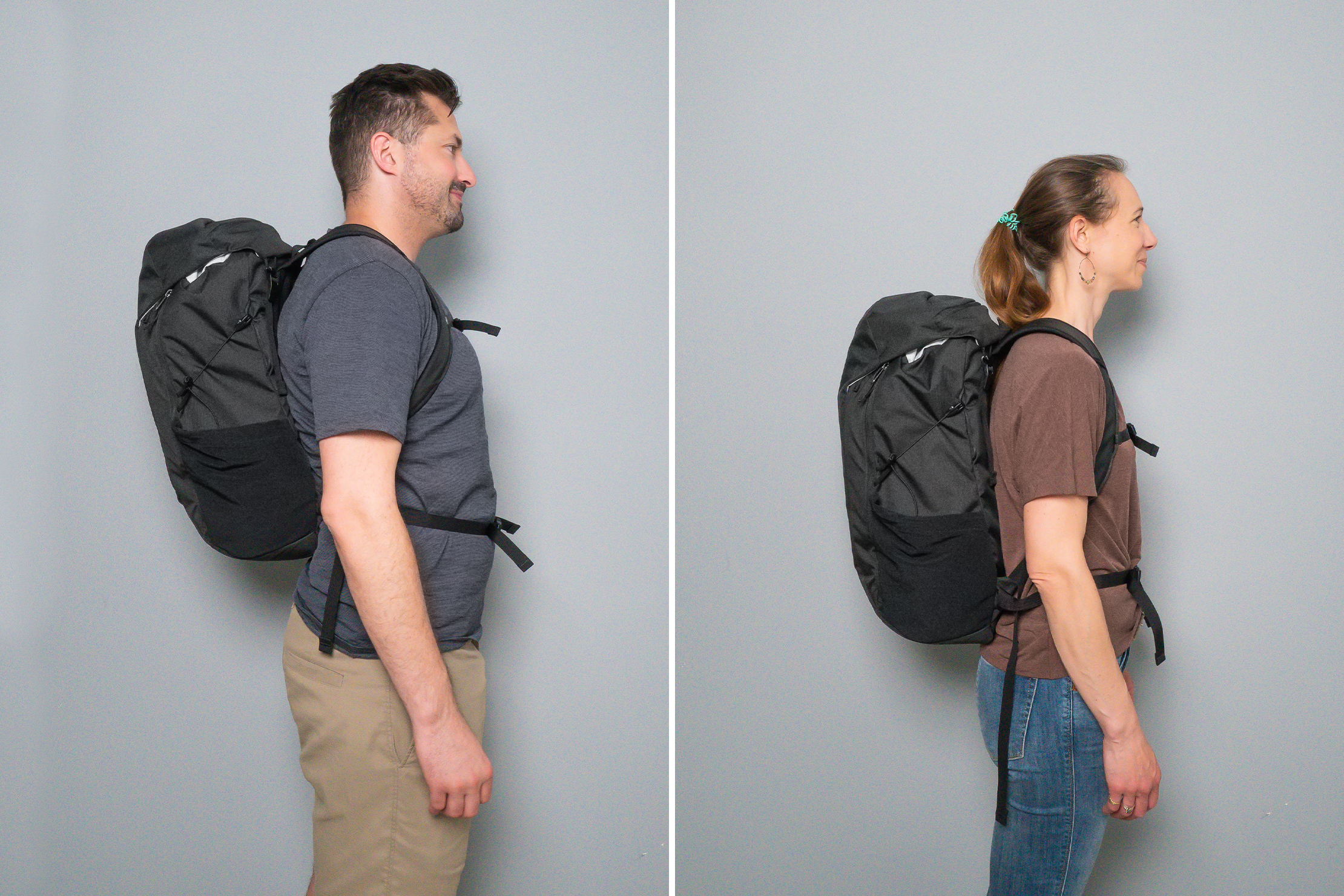
Yes, the Mantis 30 has a notably floppy structure when it’s not fully packed. It’s a sensation we couldn’t quite shake whenever we had it on. Whether that’s mainly due to the recycled polyester fabric, or just the general shape of the bag, we can’t tell (we’re not bag engineers, after all). However, the harness system can mitigate a lot of that floppy feel. Granted, we had to dial in the adjustment to a notably tight level for all of the straps, including the sternum and waist straps.
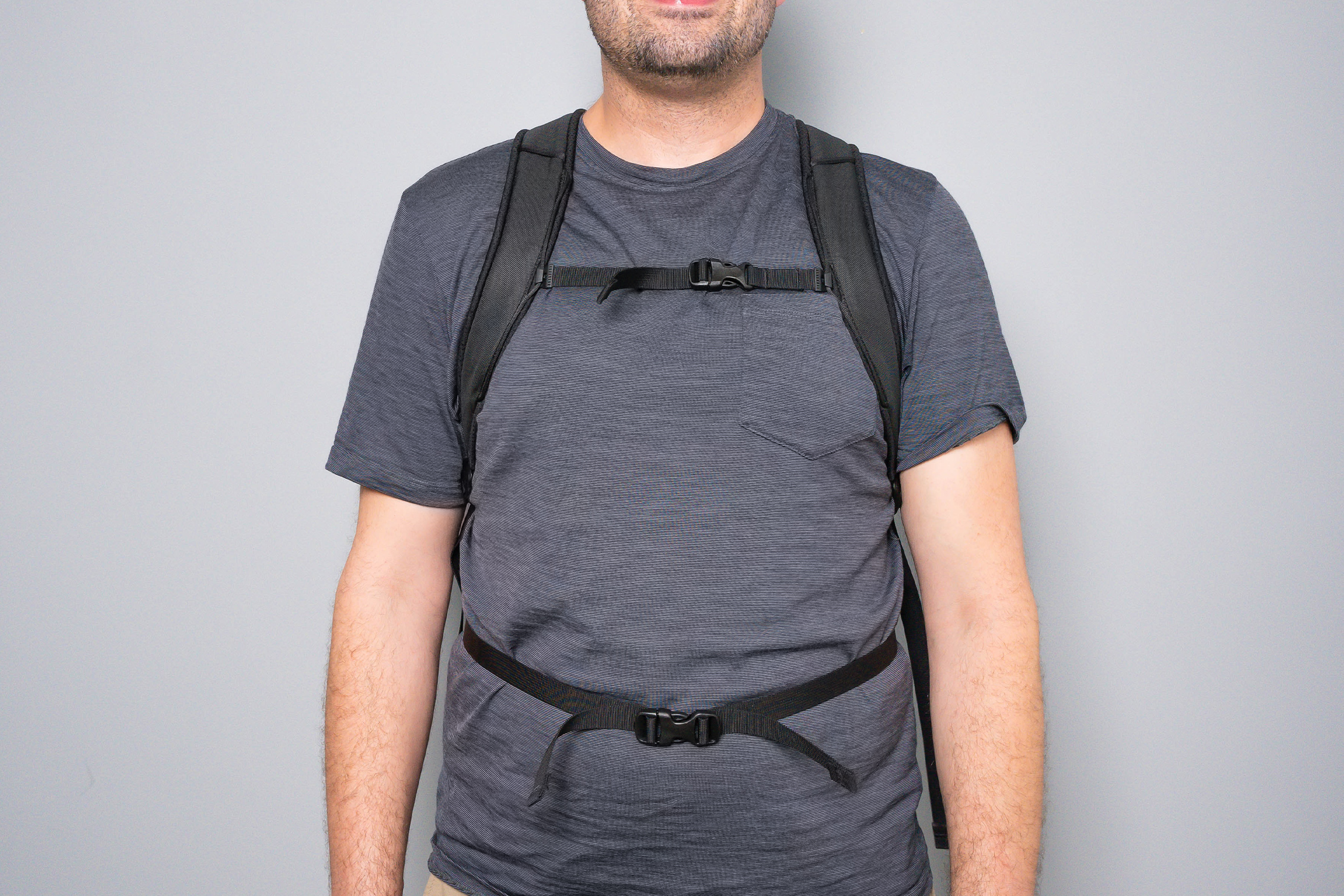
So, is it comfortable to carry or not? Despite the floppy sensation, comfort is still quite good. As mentioned, having a rigid frame sheet helps a lot by spreading the load fairly evenly on the back. Meanwhile, the sternum strap helps pull the weight forward, and so too does the waist strap. On that note, the waist strap sits higher than others we’ve tested before. It sits closer to the stomach than the hip. Your mileage may vary depending on your body size and shape, but it’s worth noting.
Inside The Backpack
A large zippered pocket for your quick-grab items is at the front of the Mantis 30 a. It has a vertical opening spanning almost half the height of the bag, which translates to wide accessibility. More so than a wide opening, we dig the white liner Arc’teryx uses. All-black has a classy aesthetic appeal, but a dark-colored liner would’ve made finding sifting through gear rather tricky.
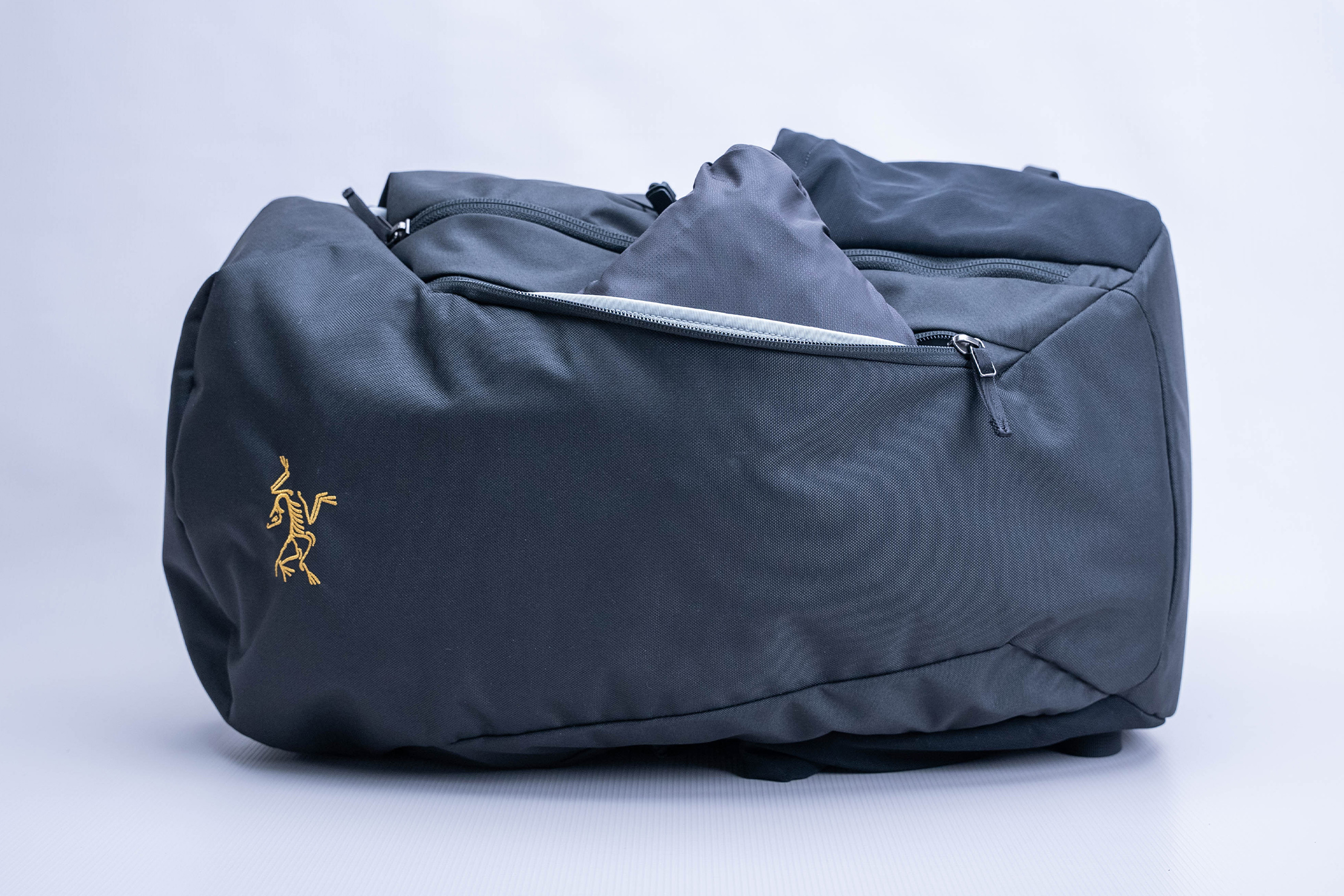
There’s a ton of space inside for bulky items like a high-capacity battery bank, granola bars, a packable jacket, or a travel wallet. On the other hand, it’s just an empty pocket with no extra organization, so we wouldn’t toss very small gear like tech accessories inside. As a workaround, we recommend using a tech pouch to store tiny accessories in this pocket.
Next up is the top pocket. It’s not as big as the front pocket, but you still get a fair amount of independent space to store gear like a wallet, a smartphone, and a set of keys. It also uses the same white liner, although it still has no interior pockets for organizing gear. That said, we like that it’s at the top because it’s easy to reach whenever the bag is on the floor beside us.
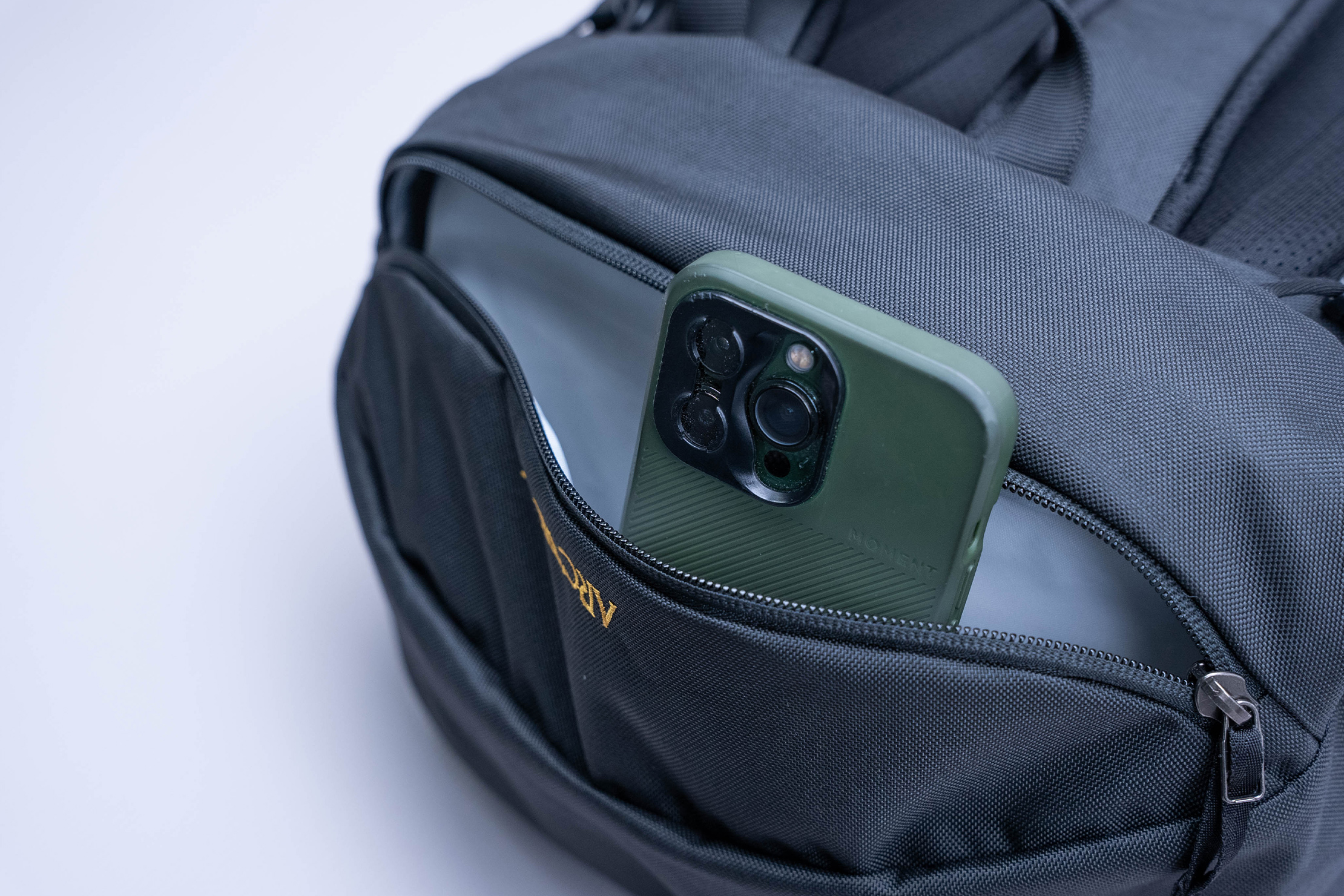
There’s also another adjacent pocket . Fold over the hatch to find another zipper. You don’t get as much space as you do with the exterior pocket, but it’s enough to fit a packable cap or a pair of gloves. That said, whatever you put here can cut into the neighboring pocket’s space, so keep that in mind.
Whereas we’ve no major complaints about the front pocket, we’re more apprehensive, in general, about the adjacent top pockets and the Mantis 30’s top hatch. First, since the pockets are built into the Mantis 30’s top hatch, packing them with hefty items can cause the bag to tip over when you fold it open to access the main compartment.
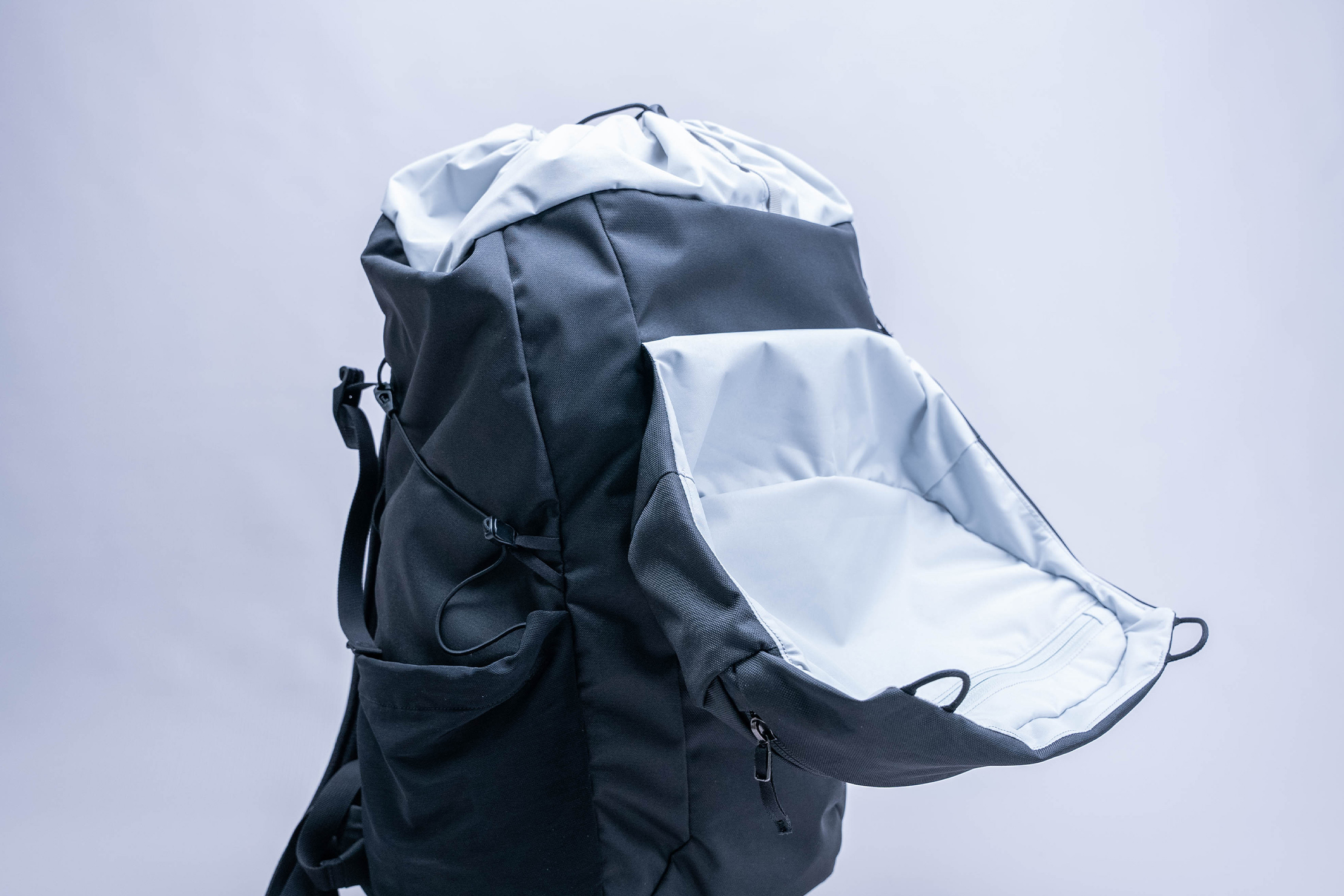
Second, the hatch itself is rather clunky and slow to open. It’s held in place by two thin straps anchored to the Mantis 30’s back panel that clip onto loops along the hatch’s edge. Backpacks that use a top cover + drawstring cinch (like the Danner Daypack 26L and Osprey Daylite Cinch) are generally slower to open than their zipper-only counterparts. Still, the Mantis 30 feels particularly slow because of its dual-strap setup.
By the way, if those adjacent hatch pockets are not enough, there’s also a dump pocket below. It’s a handy spot in case you’re carrying anything extra or just want to lessen the load of those top hatch pockets. Just note that, like the hatch pockets, this pocket also sits adjacent to the front pocket.
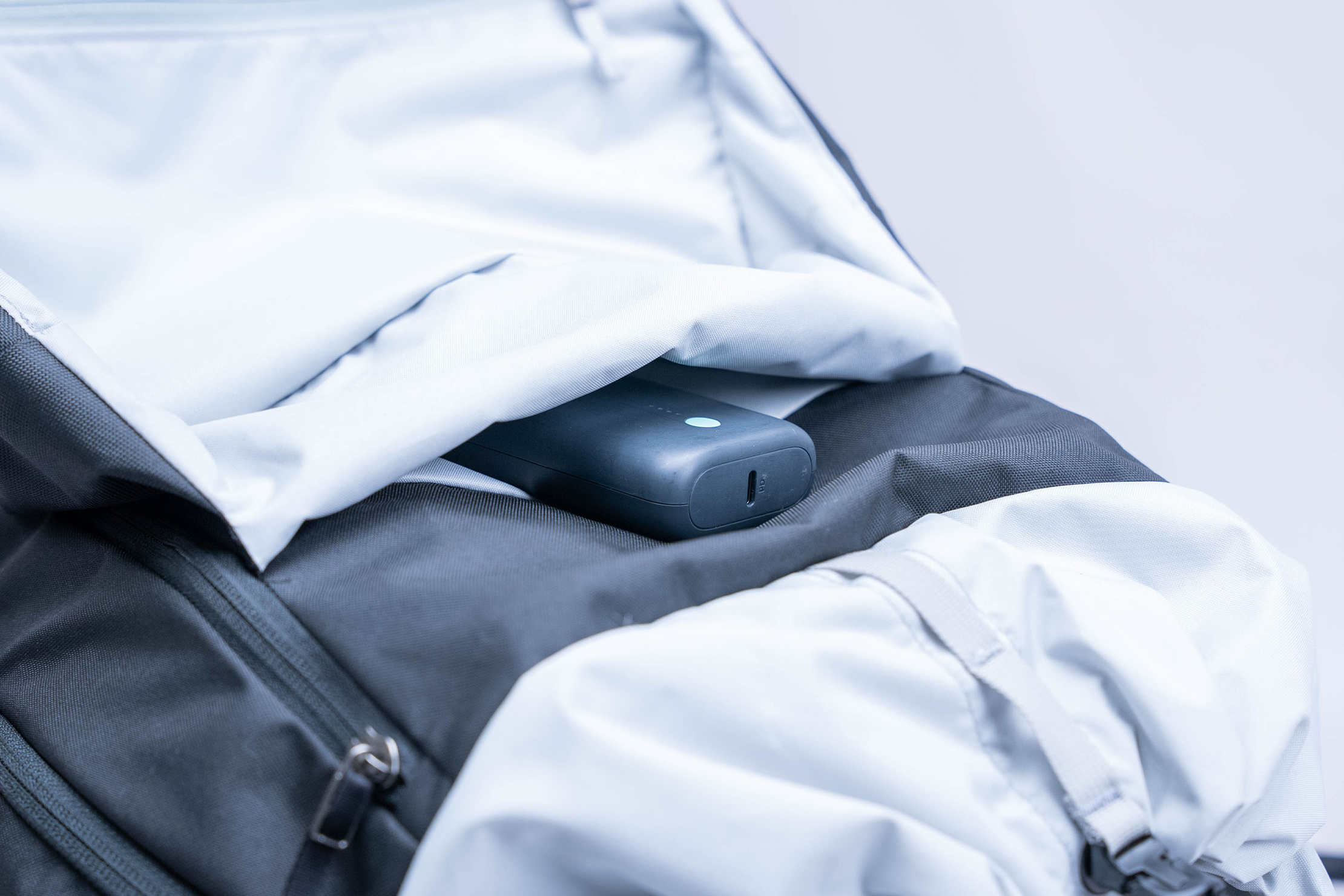
Have you heard enough of pockets at this point? That’s okay because we’re talking about the main compartment next. As we’ve mentioned, you must go through the top hatch and a drawstring cinch each time you want to access the main compartment. The drawstring is fairly easy to use, and you can stash the entire length into the dump pocket we mentioned in the earlier paragraph. The hatch, on the other hand, is the really clunky part. Apart from opening both straps, you must also adjust their lengths just right to prevent the hatch from sagging. Overall, accessibility is slow at best and just plain clunky at worst.
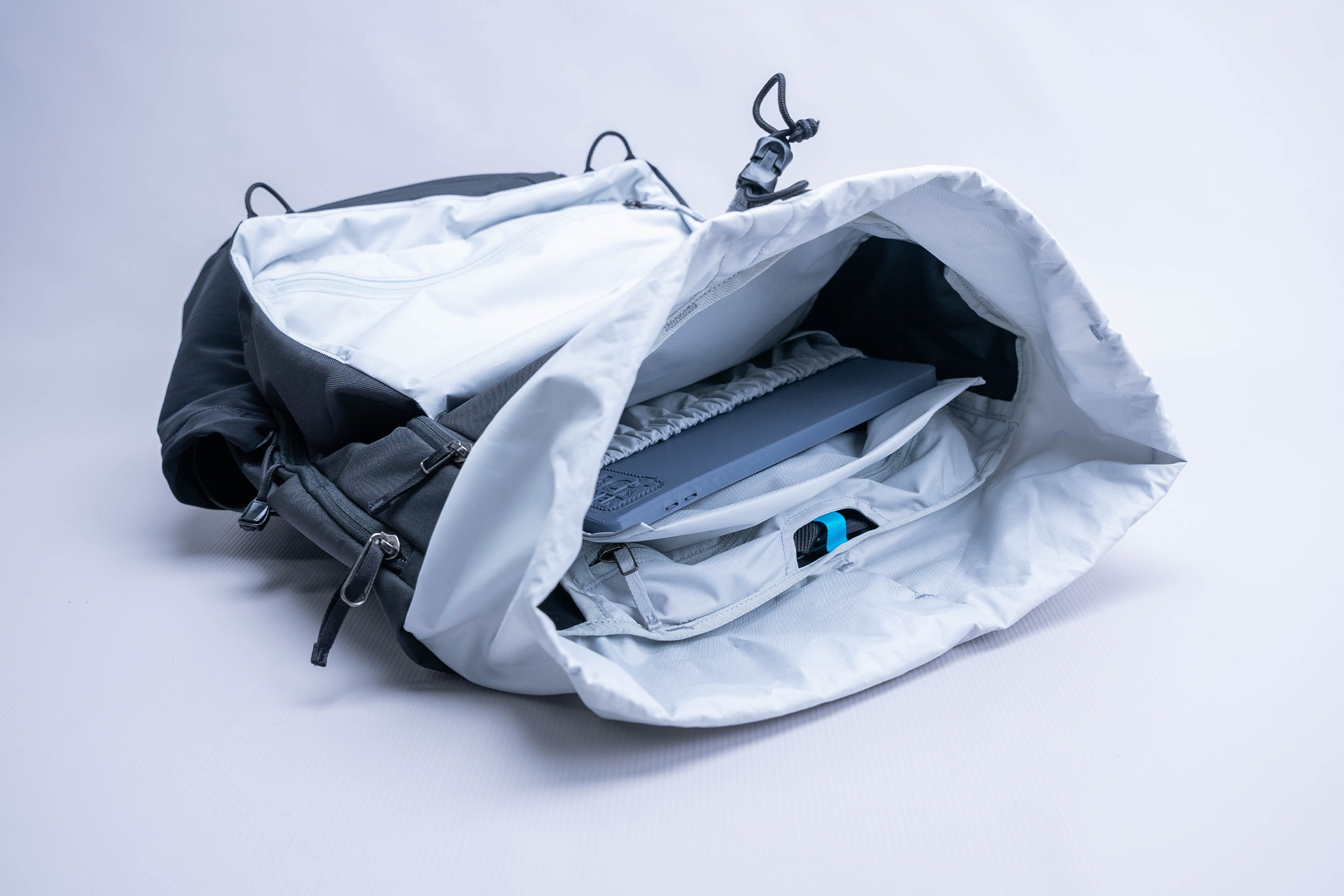
The inside of the main compartment is fairly plain, with a ton of usable space. Bulky items like packing cubes and pouches go in, and you can arrange them side by side vertically or lay them on top of each other horizontally—both options are doable. The interior also uses the same white liner, by the way, so kudos to Arc’teryx for using bright fabric throughout the various pockets and compartments of the Mantis 30.

If you’re looking for a bit more organization, the Mantis 30 has got you covered. Near the top is a zippered pocket for small accessories. It also contains a built-in key clip to keep them from getting mixed with your other items. The clip is a bit plasticky, and we wish Arc’teryx went for beefier hardware. Situated above the pocket is a toggle to attach a water bladder.
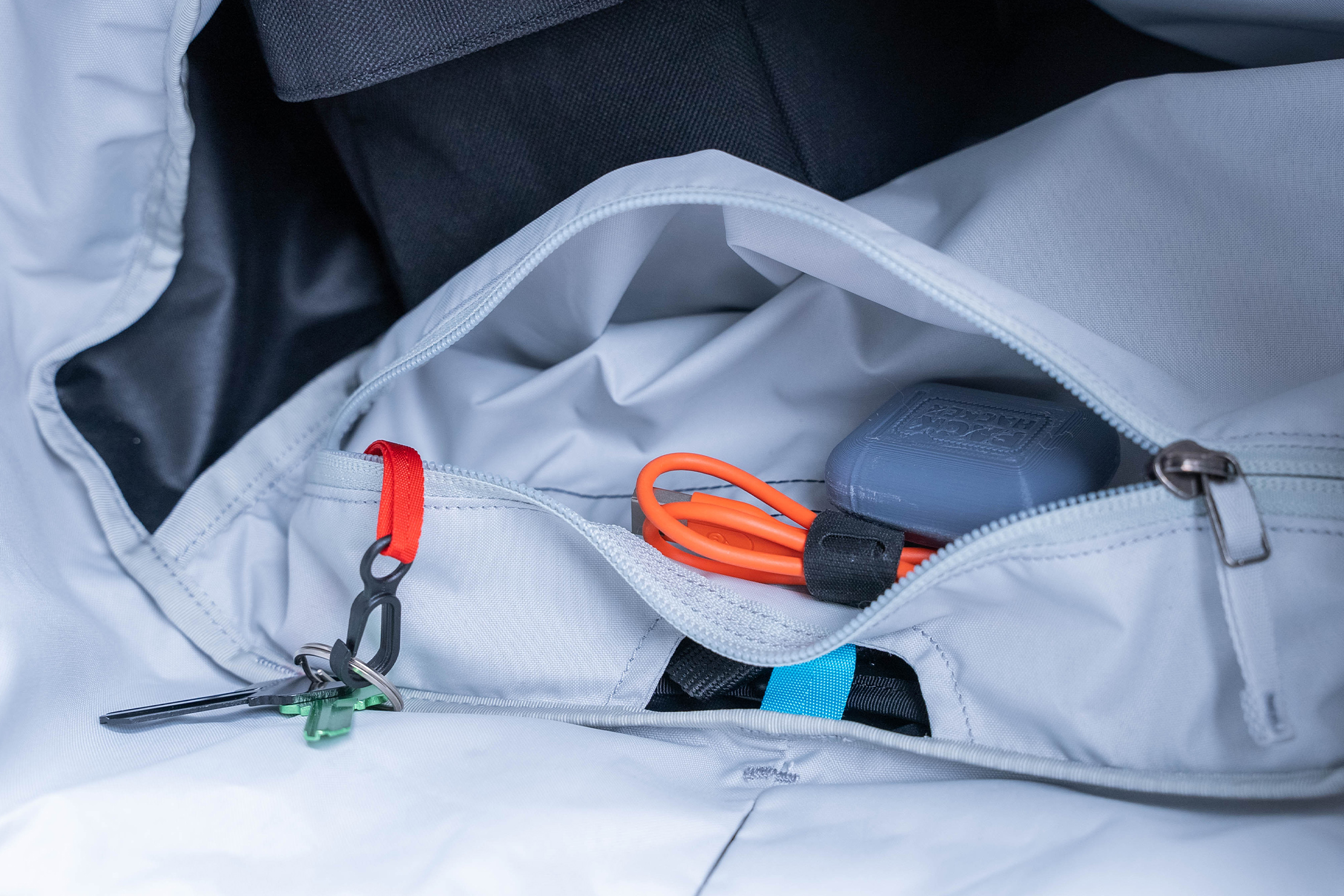
Unfortunately, because the pocket is between the toggle and laptop sleeve (which doubles as the water bladder pocket), you have to feed the toggle through a hole if you wish to use it. Similarly, since the laptop sleeve is underneath, the pocket can get in the way when you’re trying to get your laptop out—yes, accessibility is a pain point with the Mantis 30.

All of that said, there is a quicker way to get into the main compartment if you’re in a hurry. A zipper on the right side of the bag grants direct access to the interior. It’s smaller when compared with the drawstring cinch’s opening, but it’s enough if you just need to get one or two packing cubes out. On the other hand, you can’t take out your laptop or any of the gear you have stowed in the zippered pocket through this opening (not easily, anyway). Additionally, this defeats a core benefit of having a hatch and drawstring closure—exceptional weather resistance—since water can still seep through a non-waterproof zipper like this one.
Usage Timeline
Condition: Excellent
- Bag is a little floppy with nothing inside
- Dig the stiff frame sheet so far
- There’s a lot going on overall
- The straps are pretty thin – curious to see how this feels during testing
Condition: Excellent
- Like the quick access pocket at the top of the bag
- Takes a long time to get into the main compartment with 2 staps and a drawstring, plus, with zipper access to the main compartment it’s still not as highly weather resistant
- Top access could sometimes come too far back or down if not tightened the right amount for load
- Carry is comfortable with stiff back panel, but pack can appear saggy if not perfectly, fully loaded


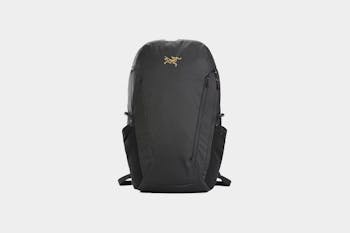






Get your questions about the Arc'teryx Mantis 30 Backpack answered from our team and the Pro Community right here on the page. Plus, join discussions with other members about gear, guides, and more.
Join Pack Hacker Pro or, Sign In